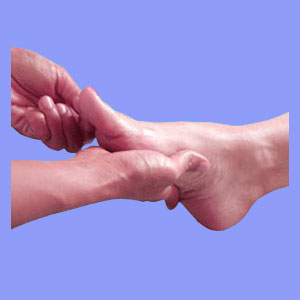
Sciatica foot drop is a known side effect of certain spinal nerve root compression issues and may also occur due to other problematic sciatica causes. Foot drop is a term used to describe difficulty or inability to elevate the front of the foot, which is needed in order to walk normally and perform a variety of typical day to day functions. The medical term for this anatomical ability is dorsiflexion. Meanwhile, the proper diagnostic term for foot drop is dorsiflexion deficit.
Patients with foot drop are often scared into premature surgery by their care providers, who claim that nerve injury exists and may lead to paralysis or permanent neurological damage. However, some cases are not caused through structural spinal processes, while others which are spinally-enacted may resolve all by themselves.
This article will investigate the occurrence of foot drop in association with sciatica. We will uncover the sources of this frightening symptom, as well as providing some facts and myths about dorsiflexion deficit conditions.
Diagnosis of Foot Drop
Besides for direct patient complaints about the affected area, foot drop is typically diagnosed by a pronounced change in normal gait. This basically means that the way a person walks has changed in response to the inability to raise the front of the foot. Many patients find that they stumble or stub their toes often when trying to walk normally, so they develop a shuffling or sideways gait instead.
Heel walking is one of the tests used to diagnose foot drop. Patients with the condition will have a difficult time walking on their heels. Additionally, they will typically demonstrate an exaggerated gait on the unaffected side to compensate for the difficulty walking.
Neurological testing and other tests, such as an MRI, are needed to diagnose the exact reasons for foot drop.
Sciatica Foot Drop Causes
Diagnostic testing will rule out non-sciatica related foot drop syndromes. For the remainder of affected patients who do have sciatica, the actual source of symptoms is usually diagnosed as stemming from lumbar spinal nerve root compression at L5.
The usual diagnostic explanations include herniated discs and spinal osteophytes enacting foraminal stenosis at the L5 level. Spinal stenosis virtually anywhere in the vertebral column can also cause foot drop symptoms and is sometimes the cause, even when L5 foraminal stenosis is present, but is coincidental to the symptoms experienced. This can make structural diagnosis difficult.
Additionally, ischemia is a lesser known and rarely diagnosed source of some persevering sciatica syndromes. This is the same condition which has plagued me for so long, in addition to my many spinal issues. It is for this reason that I always advise patients to consider this possibility, especially when a variety of therapy options have failed to bring them lasting relief.
Sciatica Foot Drop Advisory
Foot drop is occasionally misdiagnosed as coming from a structural issue, when all along the symptoms are enacted by regional ischemia of the L5 nerve root or the entire sciatic nerve.
Psychogenic ischemia is a mystery to doctors, since they do not generally practice mindbody medicine and are puzzled by the reasons why the mind might create physical pain. That being said, there are some medical care providers, such as the world renowned Dr. John Sarno, who have elevated knowledge therapy from a little known technique to a widely practiced and extremely effective treatment modality for a vast assortment of psychosomatic disorders.
If you have been unable to find relief from your sciatic nerve pain and complete or partial foot drop, I advise you to think about oxygen deprivation and how it may just be the real reason why your symptoms won’t go away.
Of course, if a definitive structural nerve or spinal cord compression scenario exists, and can explain the symptoms, then medical care is both appropriate and indicated. In some cases, nonsurgical spinal decompression may be able to successfully resolve disc issues causing foot drop. In other cases, surgery may be needed to bring about a lasting end to the symptoms. Regardless, just be sure the diagnosis is sound and sure before spending all your time, money and hope on any drastic treatment, especially if there are significant risk factors involved.





